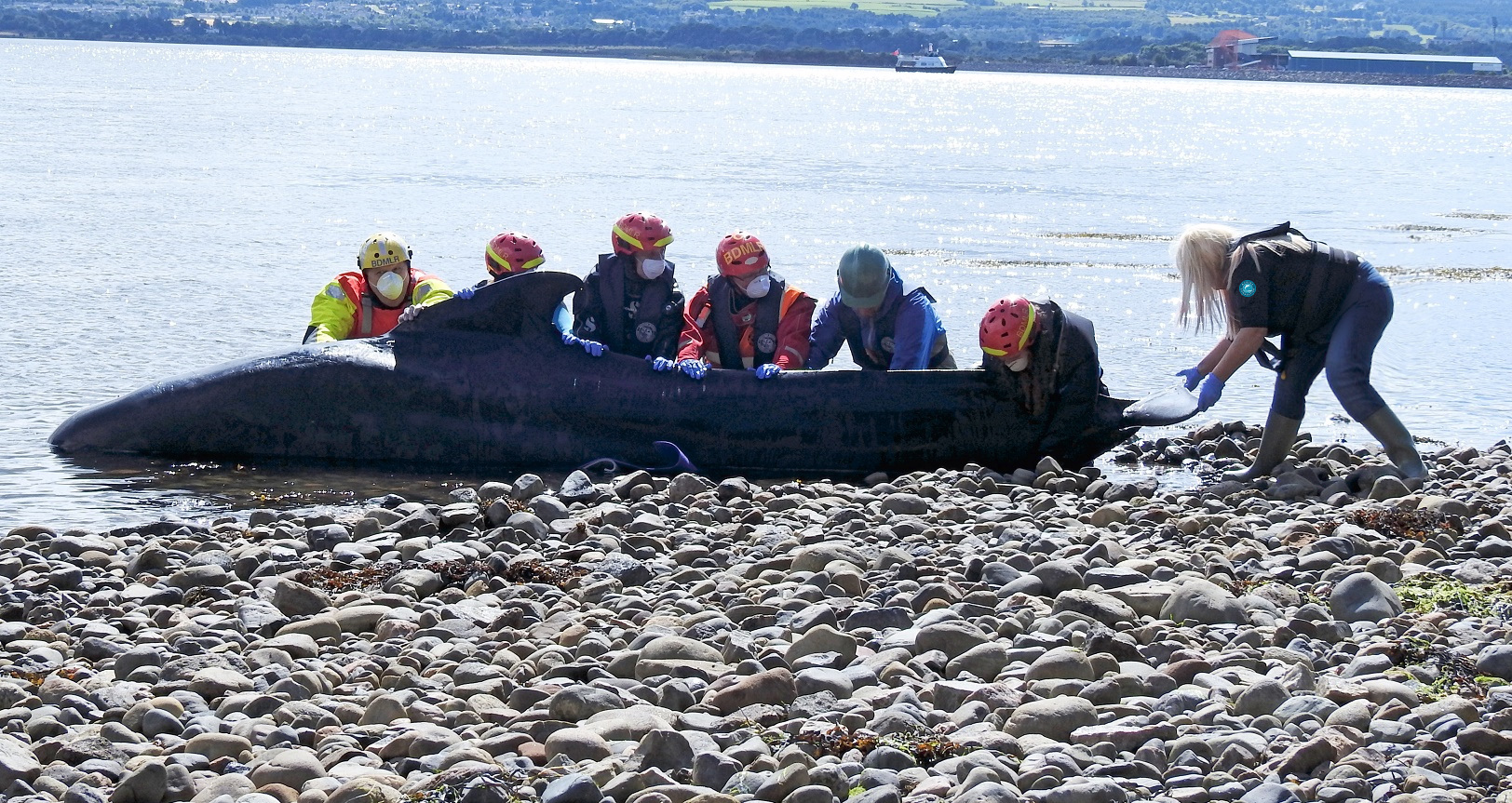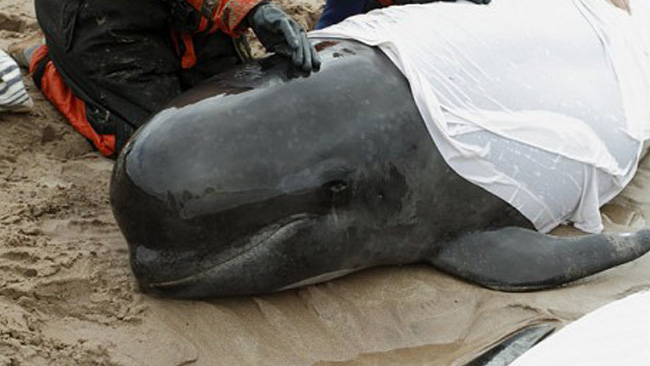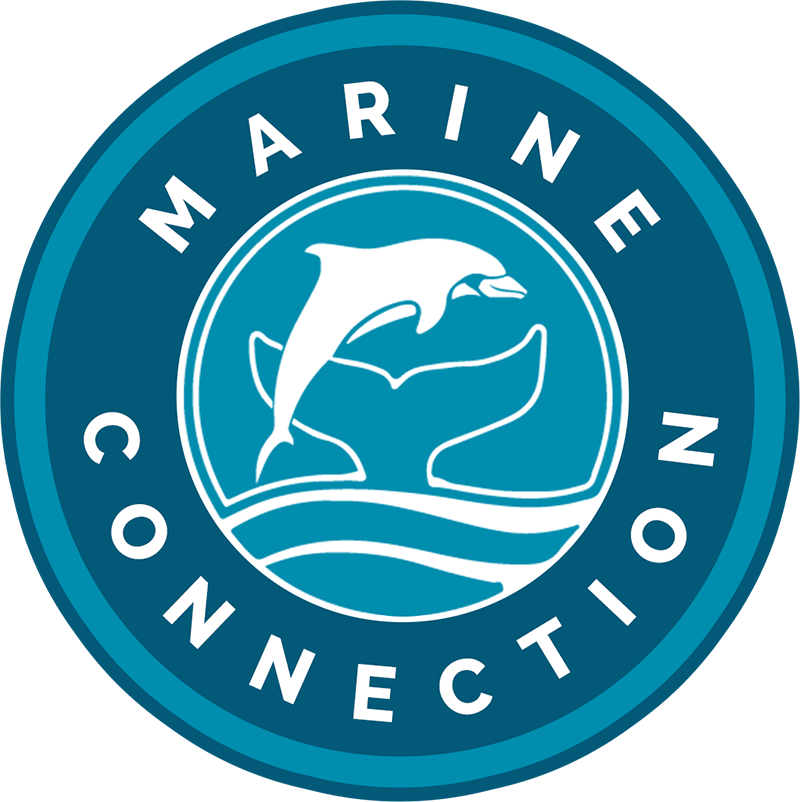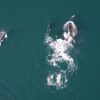Cetacean strandings can involve anything from a single animal to groups of multiple individuals, spanning various sizes and species. While the definition of a mass stranding varies between countries, it typically refers to the stranding of two or more unrelated animals. Although mass strandings at a single location are relatively rare, when they do occur, they often draw significant media attention and prompt large-scale rescue efforts.

Marine Connection is an active member of the Marine Animal Rescue Coalition (MARC), a network of organisations dedicated to rescuing marine mammals—such as dolphins, whales, porpoises, and seals—along the UK coastline. MARC serves as a collaborative platform for sharing knowledge, expertise, and resources, helping to ensure a coordinated and effective response to live strandings.
Cetacean strandings, where whales, dolphins, or porpoises beach themselves, can occur for a variety of reasons, including illness, injury, or navigational errors. When a stranded animal repeatedly returns to shore despite rescue efforts, it is often an indication that it cannot survive. In such cases, a veterinarian may determine that euthanasia is the most humane course of action to prevent further suffering.
Why strandings happen
Chasing Prey
Dolphins and whales may strand while pursuing prey into shallow waters. In the excitement of the chase, they can misjudge the depth or become trapped by retreating tides.
Disease & Malnutrition
Illnesses such as bacterial infections (e.g., pneumonia, meningitis), parasitic infestations (like lungworm), or viral diseases (notably morbillivirus) can weaken or disorient animals. Sick individuals may strand as they become too weak to swim or navigate properly. Young calves separated from their mothers or older animals unable to feed properly can become weak and disoriented. Malnutrition leads to reduced stamina and poor navigation ability, increasing the risk of stranding.
Navigational Errors
Some species use the Earth’s geomagnetic fields to navigate. If these magnetic contours lead into shallow areas or beaches (e.g., across a peninsula), animals may inadvertently follow them ashore. Unusual weather, such as electrical storms, can disrupt their magnetic sense and contribute to stranding.
Sonar and Noise Pollution
Loud underwater sounds from military sonar or oil exploration can interfere with cetacean echolocation. These acoustic disturbances may cause disorientation, panic, or even physical damage to internal organs (acoustic trauma), leading to stranding.
Strong Social Bonds
Many cetaceans are highly social. If one member strands and becomes distressed, others may follow due to social cohesion and communication. This chain reaction often results in mass strandings, especially in tight-knit pods.
Trauma
Physical injuries such as wounds, dislocations, or fractures from collisions with ships, predators, or fishing gear can incapacitate animals. Injured animals may strand because they are unable to swim effectively.
Each of these factors may act alone or in combination, making strandings difficult to prevent or predict. In many mass strandings, multiple causes—like disease, sonar activity, and strong social ties—may be involved.
Anyone finding a stranded cetacean should report it immediately to the relevant authorities in their country as soon as possible as most have networks of experts / veterinary specialists specifically trained in dealing with strandings.

If you find a live stranded cetacean in the UK:
Please contact our colleagues at British Divers Marine Life Rescue (BDMLR)
24 hour Rescue Hotline: 01825 765546
Rapid reporting and swift action are crucial to significantly increase an animal’s chance of survival.
If you find a live stranded cetacean:
- Do not attempt to move it without first seeking expert assistance via the Hotline.
- Do not pull by its dorsal fin, tail-fluke or drag the animal back into the ocean.
- Try to keep people and dogs away to help stop further stress to the animal.
- Approach with care, be careful – dolphins can make sudden, unexpected movements which can cause injury.
- Keep the animal cool with seawater. It is vital that a stranded cetacean is kept cool however care should be taken not to let water enter the blowhole – this is vital.
If the cetacean is dead:
If possible take photographs and an exact record of the location then contact:
UK (all species): Cetacean Strandings Investigation Programme 0800 652 0333
The CSIP collects detailed information on every dolphin, porpoise, or whale that is found stranded on UK shores. This data helps researchers understand why the animal may have stranded, what events led to its death, and whether any new threats could impact the species’ conservation.



